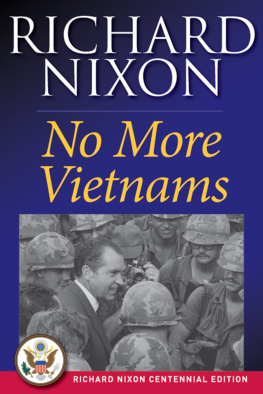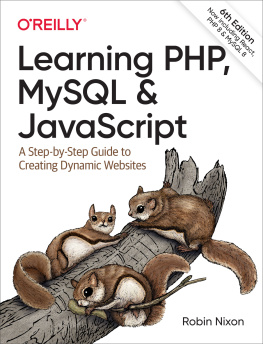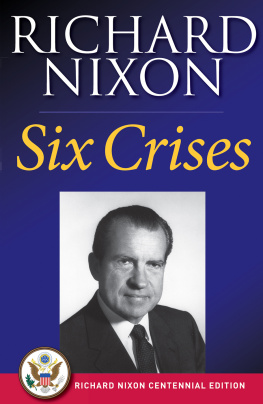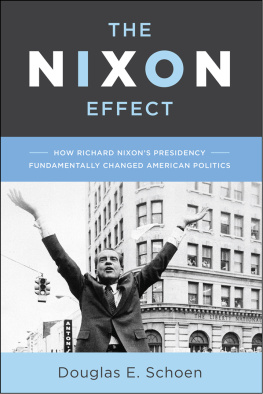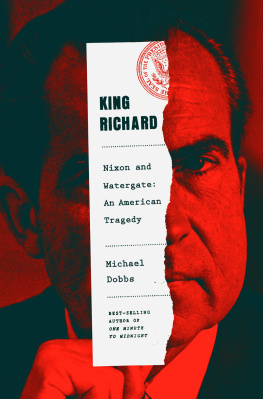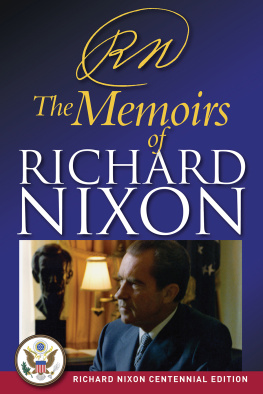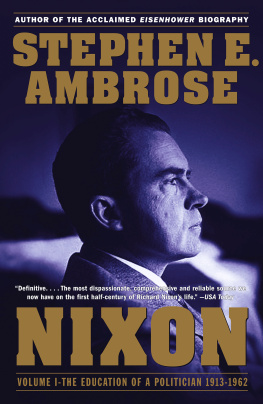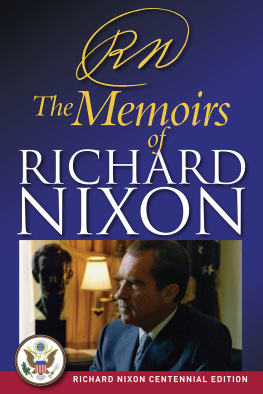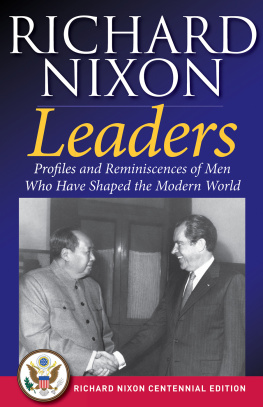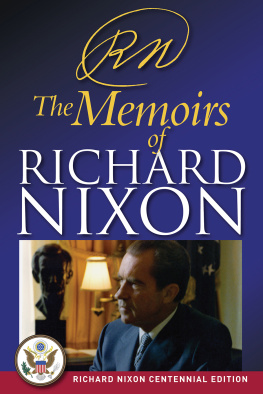
Simon & Schuster
1230 Avenue of the Americas
New York, NY 10020
www.SimonandSchuster.com
Copyright 1984, 1990 by Richard Nixon
Special contents copyright 2012 by The Richard Nixon Foundation
All rights reserved, including the right to reproduce this book or portions thereof in any form whatsoever. For information address Simon & Schuster Subsidiary Rights Department, 1230 Avenue of the Americas, New York, NY 10020
First Simon & Schuster ebook edition January 2013
SIMON & SCHUSTER and colophon are registered trademarks of Simon & Schuster, Inc.
The Simon & Schuster Speakers Bureau can bring authors to your live event. For more information or to book an event contact the Simon & Schuster Speakers Bureau at 1-866-248-3049 or visit our website at www.simonspeakers.com.
ISBN 978-1-4767-3981-6 (eBook)
We hope you enjoyed reading this Simon & Schuster eBook.
Join our mailing list and get updates on new releases, deals, bonus content and other great books from Simon & Schuster.
C LICK H ERE T O S IGN U P
or visit us online to sign up at
eBookNews.SimonandSchuster.com
Thank you for purchasing this Simon & Schuster eBook.
Join our mailing list and get updates on new releases, deals, bonus content and other great books from Simon & Schuster.
C LICK H ERE T O S IGN U P
or visit us online to sign up at
eBookNews.SimonandSchuster.com
Also by Richard Nixon
Beyond Peace
Seize the Moment
In the Arena
1999: Victory Without War
Real Peace
Leaders
The Real War
RN: The Memoirs of Richard Nixon
Six Crises
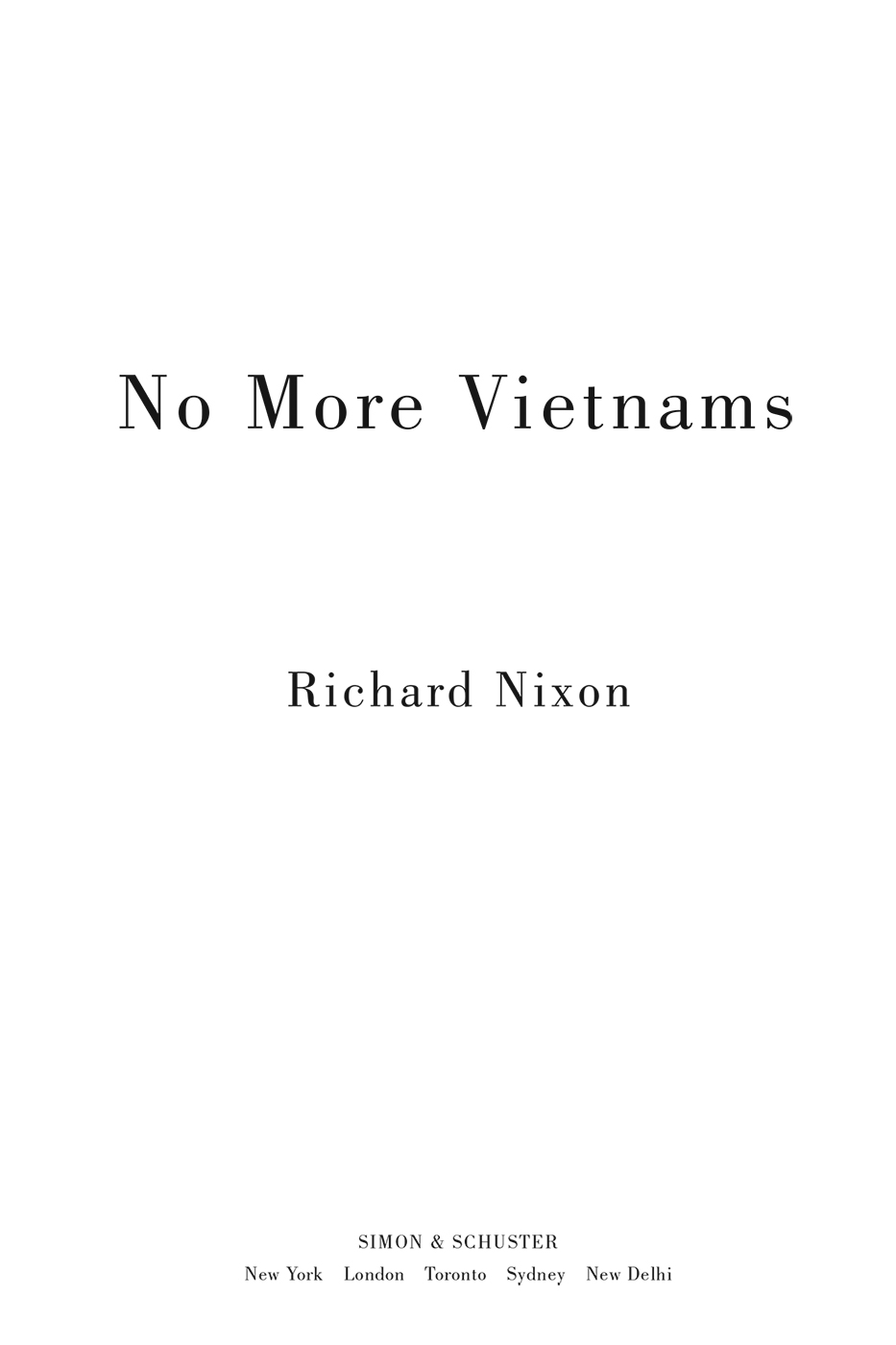
C ONTENTS
To those who served
I NTRODUCTION
I published Real Peace , my fifth book, in a private edition in 1983. It was my first and only experience as a publisher. It was also the only case in which I was able to approach writing an entire book in the way I had always wanted, which was to envision it as a long speech. I wanted it to have the impact of a book but with the clarity, simplicity, and immediacy of a spoken address.
Real Peace was written five years after The Real War. During his first years in office President Reagan had vigorously addressed the crisis in superpower relations I had described in the earlier book. He had undertaken a massive defense buildup and was taking a more assertive line against Soviet aggression. Now I felt our goal as a nation should be a realistic strategy for preserving and extending peace around the world while reducing the chances of a suicidal nuclear war.
My advice to anyone undertaking a major writing project is to do what I have done throughout my political career, whether with speeches, articles, or books: Make an outline. You do not have to be bound strictly by it. But unless you begin by ordering your thoughts coherently, your writing will meander rather than march, sag rather than sing. Always remember, too, that while you may think all your words are pearls of wisdom, shortening the string during the editing process will keep you from getting tangled in your own rhetoric. Publishers often want big, fat books they can label as sweeping or definitive. Sometimes a subject requires such length and detail, but all too often it does not. Shorter is frequently better, because shorter texts are usually more powerful and always more read.
I began making notes over the Independence Day weekend in 1983. I finished the seventeen-page outline, written out in longhand on a yellow legal-sized pad, at 12:30 in the afternoon on July 4th, just before leaving my home in Saddle River to go to Yankee Stadium to see New York play the Boston Red Sox. The young Yankee pitcher, Dave Righetti, threw a nohitter, his first, and mine as well. I decided this was a good sign for Real Peace !
Five weeks later, I had finished the manuscript. Any author will tell you that when he has completed a project he wants to see it in print as quickly as possible. But publishers require as much as six months lead time to get a book into bookstores. I decided to cut out the middle man and asked Marin Strmecki, who had helped research the manuscript and prepare it for publication, to produce the book instead. He found a printer and designed the book and the jacket, and by September it was finished. Without a publishers giant publicity apparatus to depend upon, I mailed copies of page proofs, and later, finished books, to key columnists and opinion leaders around the world. Their responses made Real Peace my most critically acclaimed book, and soon Little, Brown asked permission to publish a regular commercial edition.
Many praised the book because they thought I was being critical of President Reagans hard line. But my most hard-hitting passages were about the myths of peace, the naive and fatally flawed nostrums being put forward by his harshest critics. I also returned to a theme I have repeatedly emphasized ever since Mrs. Nixon and I took a seventy-day trip around the world in 1953: the need to develop a more effective policy to promote freedom and prosperity in the Third World. The people in these countries have terrible problems, I wrote. The communists at least talk about the problems. Too often we just talk about the communists. Today the Berlin Wall has come down and most of the nations of Eastern Europe have begun to break free of Soviet domination. But in the developing world, the grinding poverty and misery that provide such fertile soil for communism persists and will do so for generations. The Soviet Union still spends $15 billion a year to prop up anti-American regimes in Vietnam, Syria, Cuba, North Korea, and Afghanistan. The Cold War has ended in Europe, but it is still being waged in the Third World.
During the 1980 Presidential campaign, Ronald Reagan proclaimed the war in Vietnam a noble cause. His critics called it a gaffe. I call it the truth. Of all the books I have written, No More Vietnams is the one that I felt I had an obligation to writefor the sake of the three million Americans who served, for the sake of the 56,000 who died, for the sake of the millions of people of Indochina still suffering under communism because of our failure, and for the sake of history.
Vietnam is the most lied-about war in our nations history. In the wake of the Vietnamese gulag and the holocaust in Cambodia in which two million people were killed by the communist Khmer Rouge we had tried to keep out of power, those who opposed our effortsincluding columnists, authors, and movie directorshave spent the last fifteen years scrambling to justify their antiwar position. Many of them still argue that we were on the wrong side. In this book I demonstrated not only that we were on the right side but that after our fighting men had won the war, the United States Congress lost the peace by slashing aid to our South Vietnamese allies at the same time the Soviet Union was dramatically expanding its aid to the communists in the North.
When I wrote the book in 1985, I was suffering from what my doctor described as the worst case of shingles he had ever seen. In spite of this ordeal, or perhaps as a way of distracting my attention from it, I was able to do some of the best writing I have ever done. But I erred on one important decision: the title. The one I chose was based on this passage: No more Vietnams can mean we will not try again. It should mean We will not fail again. As I look back, the title seems too clever by half, as if I were trying to outsmart people by co-opting the antiwar critics favorite bumper sticker. Titles, like texts, should be simple and direct. If I were making the decision today, I would choose a different title: A Noble Cause .
Next page
